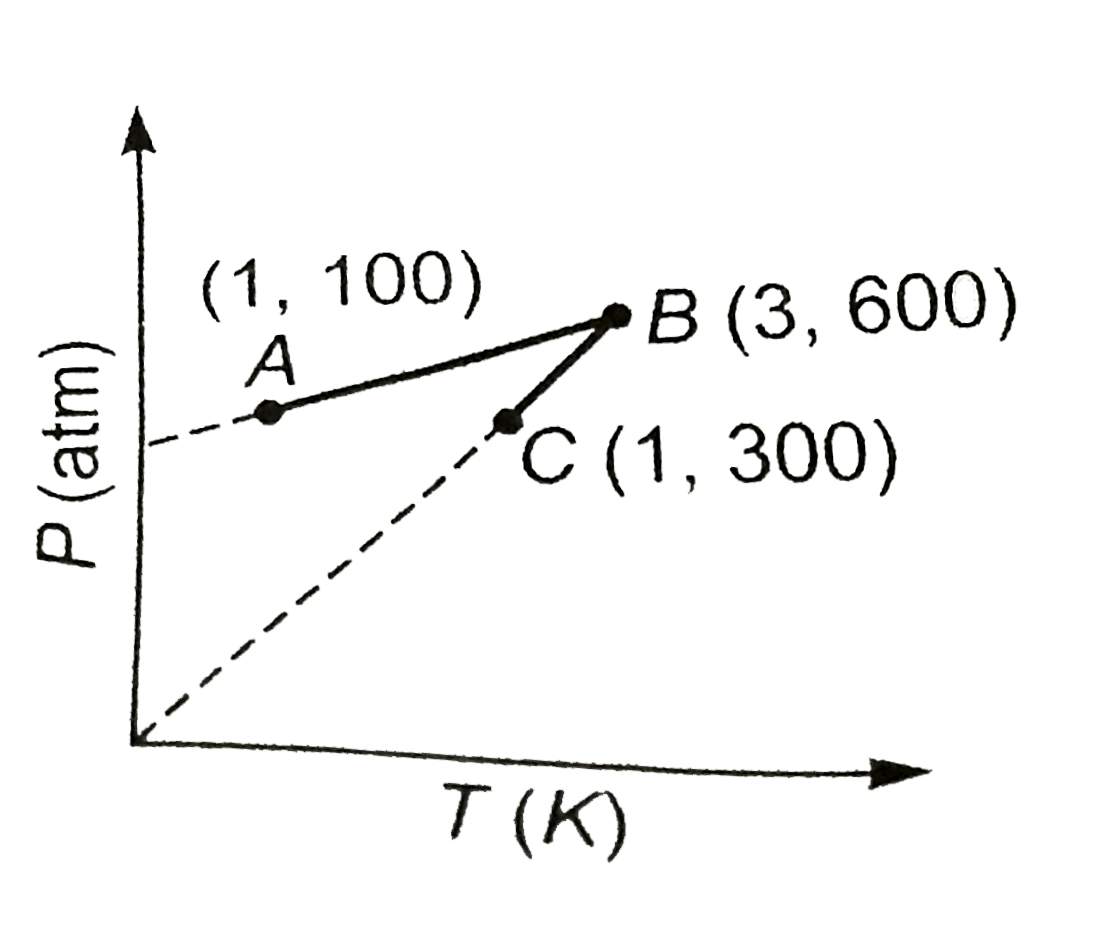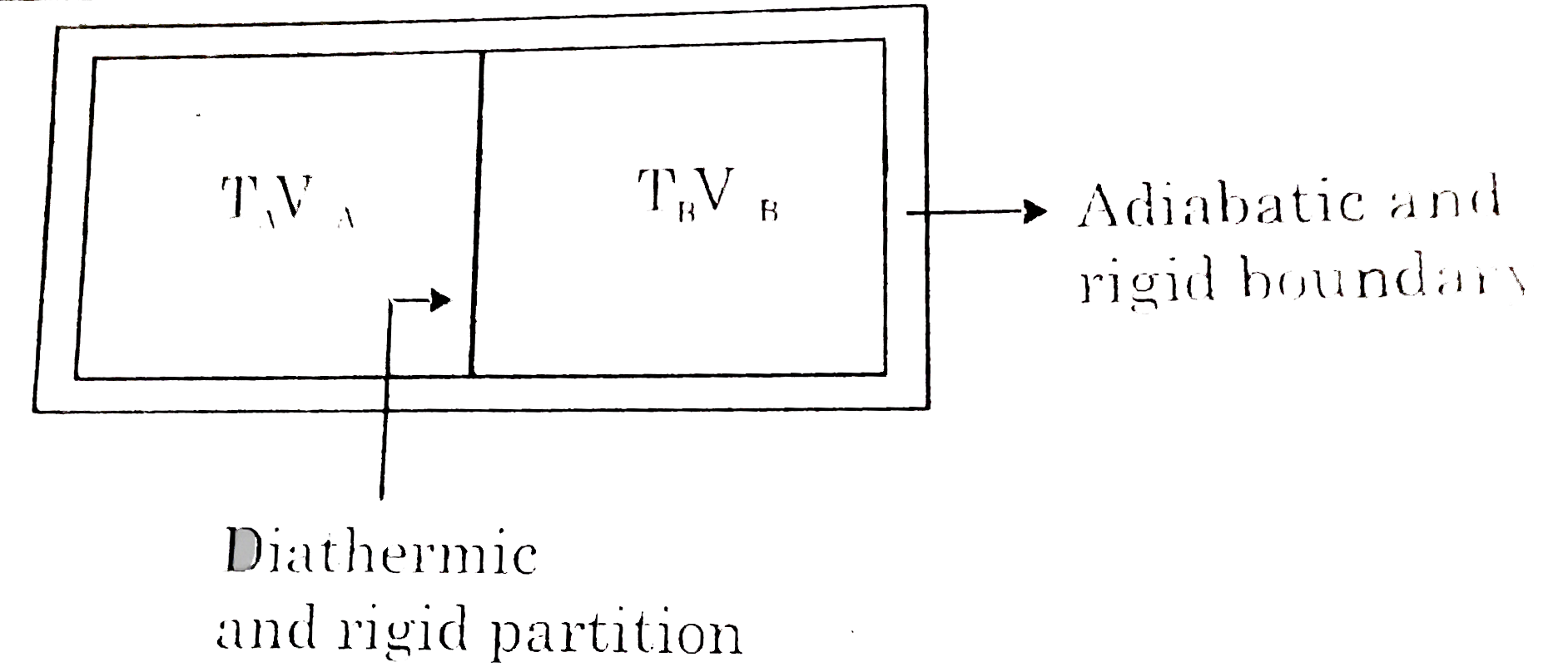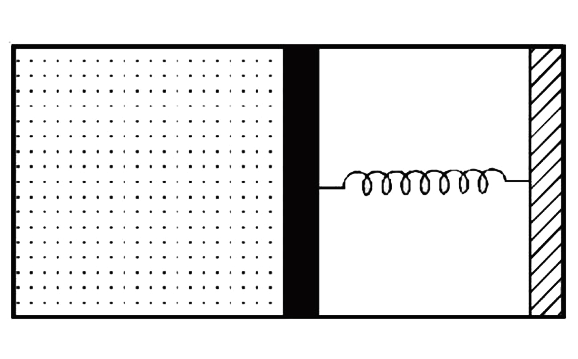Gases tend to behave non-ideally at low temperatures and high pressures. The deviation from ideal behaviour can be explained by considering two types of corrections. They are volume correction and pressure correction.
Select incorrect statement(s) :
a)Volume correction is due to finite size of molecules and pressure correction is due to force of attraction between molecules
b)At high temperatures, molecules have greater kinetic energy, and attractive forces are smaller and the behaviour of gases is close to the ideal gas behaviour
c)Volume correction is also called covolume or excluded volume and is four times the volume of spherical molecules present in one mole of the gas
d)At very low pressure, force of attraction is effective and pressure correction needs further resolution.
The correct Answer is:D
To solve the question regarding the behavior of gases under different conditions and to identify the incorrect statement, we will analyze each statement step by step.
1. Understanding Ideal vs. Real Gases:
- Gases behave ideally under certain conditions (high temperature and low pressure). However, under low temperatures and high pressures, gases deviate from ideal behavior due to intermolecular forces and the finite size of gas molecules.
Hint: Remember that ideal gas behavior assumes no intermolecular forces and that gas molecules occupy no volume.
2. Volume Correction:
- Volume correction accounts for the finite size of gas molecules. In real gases, the volume occupied by the gas molecules themselves must be considered, which is not accounted for in the ideal gas law.
Hint: Think about how the actual volume occupied by molecules affects the total volume of the gas.
3. Pressure Correction:
- Pressure correction considers the attractive forces between gas molecules. In real gases, these forces can reduce the pressure exerted by the gas compared to what would be expected from an ideal gas.
Hint: Reflect on how intermolecular attractions can influence the pressure readings of a gas.
4. Analyzing the Statements:
- Statement 1: "Volume correction is due to finite size of molecule and pressure correction is due to force of attraction between the molecules."
- This statement is correct as it accurately describes the reasons for volume and pressure corrections.
- Statement 2: "At high temperatures, molecules have greater kinetic energy and attractive forces are smaller, and the behavior of gas is close to ideal gas behavior."
- This statement is correct because increased kinetic energy at high temperatures reduces the effect of intermolecular forces.
- Statement 3: "Volume correction is also called co-volume. This is also correct or excluded volume and is four times the volume of spherical molecules present in one mole of the gas."
- This statement is correct. Co-volume or excluded volume is indeed related to the actual volume occupied by the gas molecules.
- Statement 4: "At very low pressure, force of attraction is effective and pressure correction needs further resolution."
- This statement is incorrect. At very low pressure, the force of attraction is minimal, and real gases behave more like ideal gases.
5. Conclusion:
- The incorrect statement is Statement 4. Therefore, the answer to the question is that the incorrect statement is option D.
Final Answer:
The incorrect statement is option D.
- Gases behave ideally under certain conditions (high temperature and low pressure). However, under low temperatures and high pressures, gases deviate from ideal behavior due to intermolecular forces and the finite size of gas molecules.
- Volume correction accounts for the finite size of gas molecules. In real gases, the volume occupied by the gas molecules themselves must be considered, which is not accounted for in the ideal gas law.
- Pressure correction considers the attractive forces between gas molecules. In real gases, these forces can reduce the pressure exerted by the gas compared to what would be expected from an ideal gas.
- Statement 1: "Volume correction is due to finite size of molecule and pressure correction is due to force of attraction between the molecules."
- This statement is correct as it accurately describes the reasons for volume and pressure corrections.
- This statement is correct because increased kinetic energy at high temperatures reduces the effect of intermolecular forces.
- This statement is correct. Co-volume or excluded volume is indeed related to the actual volume occupied by the gas molecules.
- This statement is incorrect. At very low pressure, the force of attraction is minimal, and real gases behave more like ideal gases.
- The incorrect statement is Statement 4. Therefore, the answer to the question is that the incorrect statement is option D.
The incorrect statement is option D.
Similar Questions
Gases tend to behave non-ideally at low temperatures and high pressures. The deviation from ideal behaviour can be explained by considering two types of corrections. They are volume correction and pressure correction.
Following represents equation of state for n moles of real gas [P+n2aV2][V−nb]=nRT. Select incorrect statement for a real gas
View SolutionUnder low pressure, minimum deviation from ideal gas behaviour is expected from
View SolutionReal gases show deviation from ideal behavior at low temperature and high pressure.
View SolutionWhich of the following gases always show positive deviation from ideal behaviour with increase in pressure ?
View SolutionAn ideal gas has pressure P, volume V and temperature T. Select the correct option.
View SolutionAn ideal gas is heated from termperature T1 to T2 under various conditions. The correct statements(s) is/are:-
View Solution
One mole of an ideal gas is subjected to a two step reversible process (A-B and B-C). The pressure at A and C is same. Mark the correct statement(s) :
View Solution
Both compartments in the above diagram are larege and contain ideal gas. The initial conditions are mentioned in the diagram. Select the correct statement(s).
View SolutionAn ideal monoatomic gas is confined in a horizontal cylinder by a spring loaded piston (as shown in the figure). Initially the gas is at temperature T1, pressure P1 and volume V1and the spring is in its relaxed state. The gas is then heated very slowly to temperature T2,pressure P2and volume V2. During this process the piston moves out by a distance x. Ignoring the friction between the piston and the cylinder, the correct statement (s) is (are)

View SolutionStatement-1: A real gas behaves as an ideal gas at high temperature and low pressure .
Statement-2: Liquid state of an ideal gas is impossible.
View Solution
